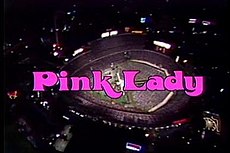
Land of the Lost is a children's adventure television series created by David Gerrold and produced by Sid and Marty Krofft, who co-developed the series with Allan Foshko. It is a live-action show mixed with stop-motion animated dinosaurs, originally aired on Saturday mornings from 1974 to 1976, on the NBC television network. CBS used it as a summer replacement series from 22 June – 28 December 1985 and 20 June – 5 September 1987. It has since become a 1970s American cult classic. Krofft Productions remade the series in 1991, and adapted it into a feature film in 2009.

Sid Krofft and Marty Krofft, known as The Krofft Brothers and born as Sid and Marty Yolas, were a Canadian sibling team of television creators, writers and puppeteers. Through their production company, Sid & Marty Krofft Pictures, they made numerous children's television and variety show programs in the U.S., particularly in the 1970s, including H.R. Pufnstuf, Land of the Lost, and Sigmund and the Sea Monsters. Their fantasy programs often featured large-headed puppets, high-concept plots, and extensive use of low-budget special effects.
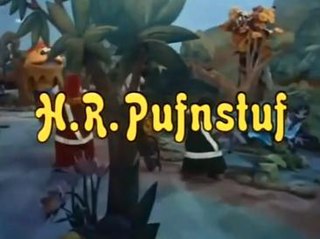
H. R. Pufnstuf is an American children's television series created by Sid and Marty Krofft. It was the first independent live-action, life-sized-puppet program, following on from their work with Hanna-Barbera's program The Banana Splits Adventure Hour. The seventeen episodes were originally broadcast Saturday from September 6, 1969, to December 27, 1969. The broadcasts were successful enough that NBC kept it on the schedule as reruns until September 4, 1971. The show was shot at Paramount Studios and its opening was shot at Big Bear Lake, California. Reruns of the show returned on ABC Saturday morning from September 2, 1972, to September 8, 1973, and on Sunday mornings in some markets from September 16, 1973, to September 8, 1974. It was syndicated by itself from September 1974 to June 1978 and in a package with six other Krofft series under the banner Krofft Superstars from 1978 to 1985. Reruns of the show were featured on TV Land in 1999 as part of its Super Retrovision Saturdaze Saturday morning-related overnight prime programming block and in the summer of 2004 as part of its TV Land Kitschen weekend late-night prime programming block, and it was later shown on MeTV from 2014 until 2016.
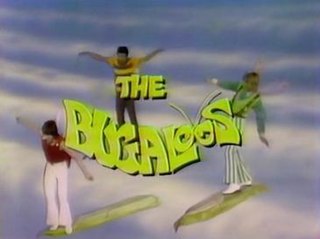
The Bugaloos is an American children's television series, produced by brothers Sid and Marty Krofft, that aired on NBC on Saturday mornings from 1970 to 1972. Reruns of the show aired in daily syndication from 1978 to 1985 as part of the "Krofft Superstars" package with six other Krofft series. The show features a musical group composed of four British teenagers in insect-themed outfits, constantly beset by the evil machinations of the talent-challenged Benita Bizarre, played by comedian Martha Raye.
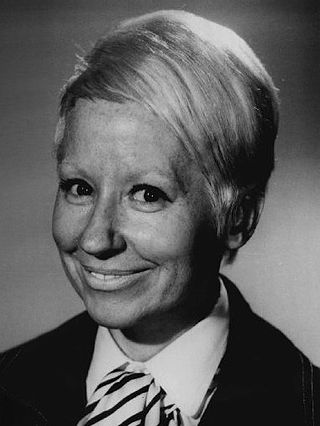
Billie Armstrong Brosch, known professionally as Billie Hayes, was an American television, film, and stage actress, best known for her comic portrayals of Witchiepoo and Li'l Abner's Mammy Yokum.
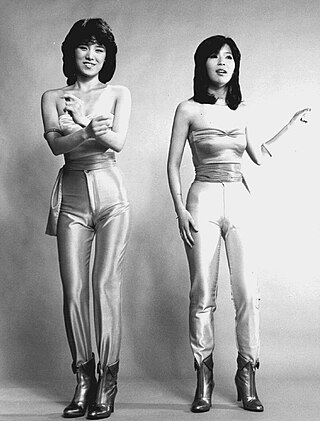
Pink Lady are a Japanese female pop music duo of the late 1970s and early 1980s, featuring Mie and Keiko Masuda. In Japan, they are remembered for a run of pop-chart hits from roughly 1976 to 1979, but in the United States, they are best known for their short-lived 1980 NBC TV variety show Pink Lady, later released on DVD under the title Pink Lady and Jeff.
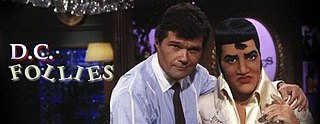
D.C. Follies is a syndicated sitcom which aired from 1987–1989. The show was set in a Washington, D.C. bar, where a bartender played by Fred Willard would welcome puppet caricatures of politicians and popular culture figures.
Mitsuyo Nemoto is a Japanese singer and actress, better known by her stage name Mie. She is a member of the popular 1970s idol group Pink Lady, known in the United States for their self-titled TV program. Mie is represented by her own management firm MHO Artist Co., Ltd.

The Brady Bunch Hour is an American variety show featuring skits and songs produced by Sid & Marty Krofft Productions in association with Paramount Television. It ran on ABC from November 28, 1976, to May 25, 1977.
Keiko Masuda is a Japanese pop singer and actress. She is better known by her nickname Kei, and is one half of Pink Lady, the top idol group in Japan in the 1970s. In the United States, they are known for their self-titled TV program. Masuda is represented by her own management firm Kei-Office.
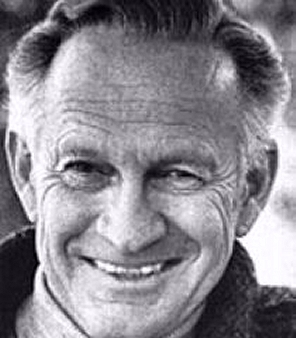
Walker Edmiston was an American actor and puppeteer.

The Paul Lynde Halloween Special is a Halloween-themed television special starring Paul Lynde broadcast October 29, 1976 on ABC. It featured guest star Margaret Hamilton in a reprisal of her role as the Wicked Witch of the West from The Wizard of Oz. Guest stars include Billie Hayes as Witchiepoo from H.R. Pufnstuf, Tim Conway, Roz Kelly, Florence Henderson, rock band Kiss, Billy Barty as Gallows the Butler, Betty White and, in an unbilled cameo appearance, Donny and Marie Osmond.

The Krofft Supershow was a Saturday morning children's variety show, produced by Sid and Marty Krofft. It aired for two seasons from September 11, 1976, to September 2, 1978, on ABC.

The Krofft Superstar Hour is a Saturday morning children's variety show, produced by Sid and Marty Krofft. After eight episodes, the show was renamed The Bay City Rollers Show. It aired for one season from September 9, 1978 to January 27, 1979 on NBC. NBC also ran other repeat Krofft shows in an unrelated umbrella titled slot, Krofft Superstars, from 1978 to 1985.
Judy Strangis is an American actress. She is best known for her roles in two ABC television series Room 222 (1969–1974) and Electra Woman and Dyna Girl (1976–1977).

Donny & Marie is an American variety show that aired on ABC from January 1976 to May 1979. The show starred brother-and-sister pop duo Donny and Marie Osmond. Donny had first become popular singing in a music group with his brothers, The Osmonds, and Marie was one of the youngest singers to reach No. 1 on the Billboard country music charts.
Van Charles Snowden was an American puppeteer active in the film and television industries for decades. Snowden performed as the H.R. Pufnstuf character on nearly every episode of the television series of the same name from 1969 to 1971. His other credits included the horror films Child's Play 2 and Child's Play 3, Tales from the Crypt and D.C. Follies.

Sid & Marty Krofft Television Productions Inc. v. McDonald's Corp. (1977) was a case in which puppeteers and television producers Sid and Marty Krofft alleged that the copyright in their H.R. Pufnstuf children's television program had been infringed by a series of McDonald's "McDonaldland" advertisements. The finding introduced the concepts of extrinsic and intrinsic tests to determine substantial similarity.
Marie is an American comedy-variety limited series hosted by and starring singer-actress Marie Osmond that aired on NBC from December 12, 1980 to September 26, 1981 with a total of seven episodes, split across two abbreviated seasons.
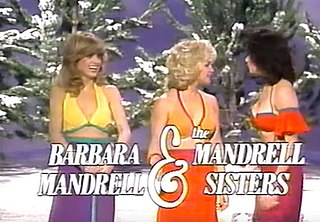
Barbara Mandrell & the Mandrell Sisters is an American variety show starring American country artist Barbara Mandrell, along with her sisters Irlene Mandrell and Louise Mandrell. The show ran for two seasons on the NBC network between November 1980 and June 1982. The program mixed both music and comedy sketches. The siblings often engaged in sketches involving their family relationship. The music of the show featured the sisters singing and playing a variety of musical instruments. Guest performers were also a part of every show. The show ended its run after Barbara Mandrell decided to step away due to the constant workload.
